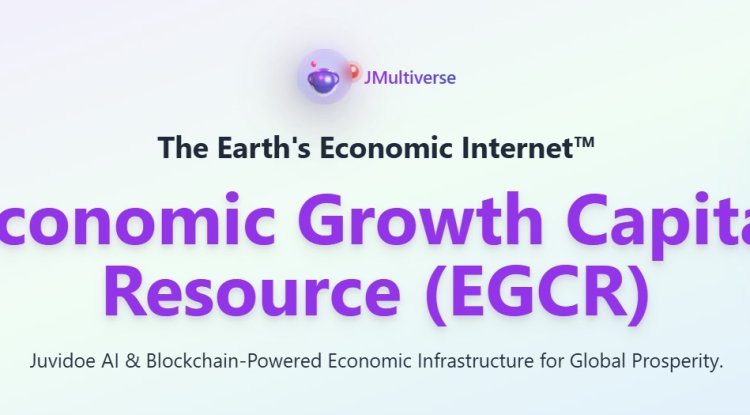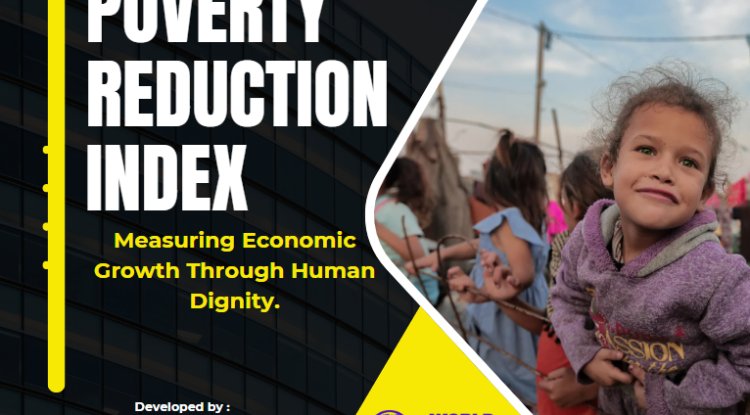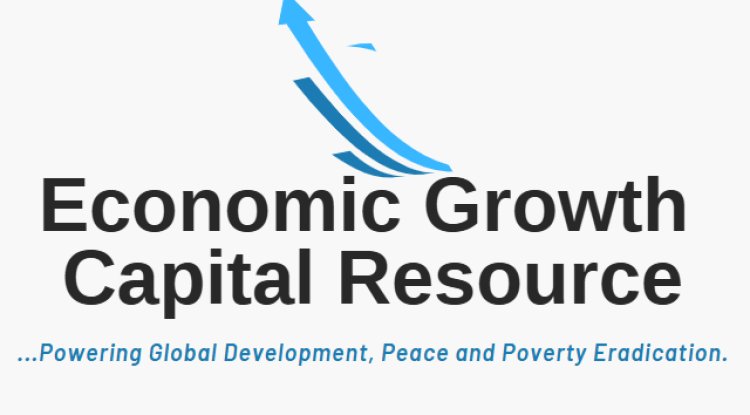OVERCOMING CHALLENGES AND LOOKING TO THE FUTURE
In every corner of the world, sub-national regions face a myriad of challenges that can impede their progress and hinder their ability to thrive. These challenges can arise from various sources, ranging from socioeconomic disparities and political instability to environmental degradation and inadequate infrastructure. However, despite their daunting obstacles, sub-national regions possess innate resilience and determination to shape their destiny. This chapter embarks on a journey through these challenges, exploring their multifaceted nature and delving into the depths of their impact on the regions. More importantly, it sets its sights on the future, offering innovative solutions and strategies to propel these regions toward a brighter and more prosperous tomorrow.

The challenges faced by sub-national regions are as diverse as the regions themselves. Some regions grapple with persistent poverty and limited access to basic services such as healthcare, education, and clean water. Others are mired in political conflicts, struggling to establish stability and foster a sense of unity among their inhabitants. Environmental degradation poses another formidable challenge, with regions witnessing the depletion of natural resources, the degradation of ecosystems, and the looming threat of climate change. Additionally, inadequate infrastructure can hinder economic growth, impede connectivity, and limit opportunities for development. The list of challenges may seem endless, but it is precisely in the face of these challenges that the true spirit of these regions emerges.
To overcome these obstacles and forge a path toward progress, sub-national regions must adopt a multifaceted approach that addresses the root causes and seeks innovative solutions. The first step in this journey is understanding the intricate dynamics at play. By analyzing the socioeconomic, political, and environmental factors that contribute to these challenges, we can understand the complex web in which sub-national regions find themselves entangled. This understanding will serve as the foundation upon which we build our strategies for the future.
As we embark on this journey of overcoming challenges and looking to the future, it is imperative to acknowledge that there is no one-size-fits-all solution. Each sub-national region possesses unique characteristics, contexts, and aspirations. Therefore, the strategies and solutions outlined in this chapter must be tailored to each region's specific needs and circumstances. Collaboration within and beyond the region will be vital in sharing experiences, best practices, and lessons learned. By building partnerships between governments, civil society organizations, academia, and the private sector, sub-national regions can harness collective wisdom, resources, and expertise to chart a sustainable and inclusive path forward.
This chapter embarks on a transformative journey, exploring sub-national regions' challenges and presenting innovative solutions to shape a prosperous future. Sub-national regions can transcend these challenges and emerge as beacons of hope, resilience, and sustainable development by addressing the socioeconomic, political, and environmental factors that hinder progress. This is a call to action for all stakeholders to unite, collaborate, and invest in the potential of sub-national regions. Together, we can overcome challenges, unlock opportunities, and build a future where every sub-national region thrives and fulfills its true potential.
Addressing Common Obstacles in Sub-national Prosperity
Sub-national regions, with their unique characteristics and diverse populations, have the potential to be thriving centers of prosperity and development. However, numerous challenges often hinder their progress and prevent them from reaching their full potential. These challenges encompass various aspects, including economic disparities, inadequate infrastructure, limited access to basic services, political instability, and environmental degradation. Here are the common challenges, their underlying causes, and effective strategies to address and overcome them to pave the way for sub-national prosperity.
Economic Disparities
Economic disparities are a prevalent challenge in sub-national regions, where certain areas experience significant poverty and limited economic opportunities while others thrive. To address this challenge, it is crucial to focus on inclusive economic growth and equitable distribution of resources. This can be achieved through targeted investments in infrastructure, entrepreneurship, and job creation initiatives. By fostering a conducive business environment, providing access to credit and markets, and promoting innovation and entrepreneurship, sub-national regions can stimulate economic activity, create employment opportunities, and uplift marginalized communities.
Additionally, investing in human capital is paramount for addressing economic disparities. Individuals can be equipped with the essential information and experience to engage in the contemporary economy by providing quality education, vocational training, and skill development programs. Moreover, promoting inclusive financial services, such as microfinance and community-based savings groups, can enable individuals and small businesses to access capital and unlock economic opportunities.
Inadequate Infrastructure
Insufficient infrastructure, including transportation networks, energy systems, and communication facilities, hampers sub-national prosperity by limiting connectivity, impeding trade, and hindering access to essential services. To overcome this challenge, strategic investments in infrastructure development are essential. This involves planning and implementing projects that prioritize the region's needs, considering factors such as geographic characteristics, economic potential, and demographic patterns.
When transportation infrastructure, such as roads, bridges, and railways, is enhanced inside and outside the region, it makes moving goods, services, and people simpler. Moreover, investing in renewable energy sources and upgrading energy grids can ensure a reliable and sustainable energy supply, fostering industrial growth and attracting investments. Enhancing communication infrastructure, including broadband internet access and mobile connectivity, enables sub-national regions to leverage digital technologies, participate in the global digital economy, and bridge the digital divide.
Limited Access to Basic Services
Sub-national territories need more access to clean water, healthcare, and education. To address this challenge, it is crucial to prioritize providing these services, particularly to underserved and marginalized communities.
Improving healthcare services involves investing in healthcare infrastructure, including clinics, hospitals, and medical equipment, and ensuring the availability of qualified healthcare professionals. Additionally, promoting preventive healthcare measures, such as vaccination programs, public health campaigns, and health education, can reduce the burden of diseases and improve overall well-being.
Ensuring access to quality education requires building and upgrading educational institutions, training and recruiting qualified teachers, and providing educational resources. Furthermore, addressing educational barriers, such as gender inequality and cultural biases, is crucial for achieving inclusive and equitable education outcomes.
Public health and hygiene depend on having access to clean water and hygiene. Implementing water supply and sanitation projects, improving water management systems, and promoting hygiene practices can mitigate water-related challenges and enhance the quality of life for sub-national communities.
Political Instability and Governance
Political instability and inadequate governance structures pose significant challenges to sub-national prosperity. They undermine social cohesion, impede decision-making processes, and hinder the implementation of effective policies and programs. Fostering inclusive governance and strengthening institutional frameworks are paramount to addressing this challenge.
Promoting transparency, accountability, and citizen participation in decision-making can enhance governance effectiveness. This can be achieved through mechanisms such as community consultations, participatory budgeting, and regular feedback mechanisms that empower citizens to voice their concerns, contribute to policy formulation, and hold authorities accountable.
Building the capacity of local government institutions, ensuring their financial autonomy, and providing technical support can enhance their ability to deliver services, manage resources effectively, and respond to the needs of sub-national regions. Additionally, promoting intergovernmental collaboration and cooperation can facilitate coordinated efforts, resource sharing, and effective implementation of policies across different levels of government.
Environmental Degradation
Environmental degradation, including deforestation, pollution, and climate change, poses significant challenges to sub-national regions, affecting their ecosystems, livelihoods, and overall sustainability. Adopting sustainable practices and promoting environmental conservation is crucial to address this challenge.
Sustainable land management strategies, such as reforestation programs, land restoration initiatives, and sustainable agriculture practices, can help combat deforestation, soil erosion, and land degradation. Furthermore, integrating climate-resilient approaches into agricultural systems, promoting agroecology, and supporting farmers in adapting to changing climate patterns can enhance food security and rural development.
Climate change's negative repercussions can be mitigated while encouraging economic growth by promoting renewable energy sources such as solar and wind power and moving to low-carbon technologies. Additionally, raising awareness about environmental conservation, promoting recycling and waste management practices, and preserving biodiversity can contribute to the long-term sustainability of sub-national regions.
Social Inequalities
Social inequalities, including gender disparities, ethnic divisions, and marginalized populations, pose significant challenges to sub-national regions. Overcoming these challenges requires a commitment to social inclusion and equal opportunities for all.
Promoting gender equality and empowering women can unlock their full potential as contributors to social, economic, and political development. This can be achieved through measures such as ensuring equal access to education and healthcare, promoting women's participation in decision-making processes, and addressing cultural and societal norms that perpetuate gender inequalities.
Addressing ethnic divisions and promoting social cohesion requires embracing diversity, promoting cultural understanding, and creating inclusive spaces for dialogue and collaboration. Recognizing and valuing the contributions of different ethnic groups, promoting intercultural exchange, and fostering social integration can strengthen the social fabric and build resilient communities.
Providing support and opportunities for marginalized populations, such as indigenous communities, persons with disabilities, and displaced populations, is essential for inclusive development. This includes ensuring access to basic services, promoting participation in decision-making processes, and addressing the underlying factors contributing to their marginalization.
Knowledge and Innovation
Promoting knowledge-based economies and fostering innovation is crucial for sub-national regions to thrive in a rapidly evolving global landscape. Investing in research and development, promoting entrepreneurship, and creating an enabling environment for innovation can unlock new opportunities and drive economic growth.
Building strong partnerships between academia, research institutions, and industries can facilitate knowledge transfer, collaborative research, and the commercialization of innovative ideas. Additionally, supporting startups and small businesses through incubation programs, access to finance, and mentorship can fuel entrepreneurial ecosystems and stimulate job creation.
Investing in digital literacy and promoting access to information and communication technologies can bridge the digital divide and empower individuals and communities to leverage the benefits of the digital age. Embracing emerging technologies such as artificial intelligence, blockchain, and the Internet of Things can create new avenues for economic diversification and enhance the competitiveness of sub-national regions.
Connectivity and Regional Integration
Enhancing connectivity and fostering regional integration can significantly contribute to sub-national prosperity. Sub-national areas can tap into a larger market, attract investments, and foster economic growth by promoting collaboration, trade, and exchange within and across regions.
Investing in transportation infrastructure that connects sub-national regions and surrounding territories is critical for enabling the flow of goods, services, and people. This includes developing efficient road networks, railways, and ports that enable seamless transportation and trade. Additionally, promoting cross-border initiatives, such as trade agreements, economic corridors, and regional development projects, can unlock the economic potential of sub-national regions and create mutually beneficial partnerships.
Facilitating the exchange of knowledge, expertise, and best practices among sub-national regions can also drive innovation, economic diversification, and learning. Setting up networks, forums, and cooperation platforms where regions exchange experiences, thoughts, and solutions can help promote a culture of continual learning and development.
Collaboration and Partnerships
Cooperation and partnerships are essential for sub-national regions to overcome their problems and achieve sustained development. By bringing together governments, civil society organizations, businesses, and communities, collaborative efforts can leverage collective expertise, resources, and experiences to drive positive change.
Building effective multi-stakeholder partnerships involves:
§ Establishing platforms for dialogue.
§ Fostering trust and mutual understanding.
§ Identifying shared goals and objectives.
These partnerships can facilitate the pooling of resources, knowledge sharing, and joint implementation of initiatives that address the multifaceted challenges sub-national regions face.
Engaging with the private sector can unlock additional resources and expertise for sub-national development. Public-private partnerships can drive infrastructure investments, promote innovation, and create employment opportunities. By aligning personal sector interests with the development goals of sub-national regions, mutually beneficial partnerships can be forged that contribute to long-term prosperity.
Sub-national regions face a multitude of challenges that can hinder their path to prosperity. However, by addressing them head-on, these challenges can be overcome. The outlined strategies highlight the importance of holistic approaches, stakeholder engagement, and tailored solutions that consider each sub-national region's unique characteristics and aspirations. With concerted efforts, collaboration, and a long-term vision, sub-national regions can navigate challenges and unlock their full potential for sustainable and inclusive prosperity.
Addressing Environmental Concerns at the Sub-National Level
Sub-national regions face a myriad of environmental challenges that have far-reaching consequences for their well-being and long-term sustainability. The intricate web of issues, ranging from climate change and pollution to deforestation and habitat loss, requires immediate attention and decisive action. The gravity of these challenges necessitates a collective effort to address them, ensuring the preservation of our planet's ecosystems and the protection of future generations.
Promoting Sustainable Land Use
One of the key ways sub-national governments can address environmental challenges is by promoting sustainable land use practices. This includes implementing effective land-use planning, regulating deforestation, and promoting reforestation initiatives. Sub-national governments can mitigate the adverse effects of land degradation and habitat loss by preserving natural habitats, protecting biodiversity, and restoring degraded land.
Moreover, sub-national governments can encourage sustainable agriculture practices prioritizing soil health, water conservation, and reduced chemical inputs. By supporting farmers in adopting agroecological methods and providing incentives for sustainable farming practices, sub-national regions can enhance food security, promote rural development, and reduce the environmental impact of agriculture.
Implementing Climate Change Adaptation and Mitigation Measures
A concerted effort is needed at all levels of government to address the urgent global threat of climate change. Sub-national governments play a crucial role in implementing climate change adaptation and mitigation measures within their jurisdictions.
Adaptation measures can include developing climate-resilient infrastructure, implementing early warning systems for natural disasters, and promoting climate-smart technologies. Sub-national governments can also support diversifying livelihoods and creating adaptive strategies for vulnerable communities, ensuring their resilience in the face of climate change impacts.
Subnational governments can actively promote using renewable energy sources, which will help significantly slow down climate change. They can also encourage eco-friendly transportation options and support energy-saving programs to lower greenhouse gas emissions. By adopting ambitious climate targets, setting emission reduction goals, and implementing appropriate policies, sub-national governments can contribute significantly to global efforts to combat climate change.
Strengthening Environmental Regulation and Enforcement
Sub-national governments must establish robust environmental regulation and enforcement mechanisms to address environmental challenges effectively. This involves developing and enforcing stringent environmental laws and regulations, monitoring compliance, and imposing appropriate penalties for violations.
Additionally, sub-national governments can invest in strengthening environmental governance by building the capacity of regulatory agencies, promoting transparency and accountability, and encouraging public participation in decision-making processes. Sub-national governments can foster a sense of ownership, responsibility, and shared commitment towards environmental protection by involving citizens and local communities in environmental management.
Fostering Sustainable Urban Development
As sub-national regions experience rapid urbanization, sustainable urban development becomes critical to address environmental concerns. Sub-national governments can prioritize sustainable urban planning, including the development of green spaces, the promotion of energy-efficient buildings, and the implementation of waste management systems.
Encouraging public transportation, promoting cycling and walking infrastructure, and reducing reliance on private vehicles can help mitigate air pollution and reduce carbon emissions. Subnational governments can also incentivize the use of greenhouse practices, such as energy-efficient designs and the use of renewable materials, in order to reduce the environmental impact of construction operations.
Promoting Circular Economy and Waste Management
Efficient waste management is essential to prevent environmental degradation and promote resource conservation. Sub-national governments can play a crucial role in promoting the transition toward a circular economy by implementing effective waste management strategies.
This can include the establishment of recycling and waste separation programs, the development of waste-to-energy initiatives, and the promotion of extended producer responsibility. Sub-national governments can minimize waste generation and create a more sustainable and resource-efficient economy by encouraging the reduction, reuse, and recycling of materials.
Sub-national governments have a crucial role in addressing environmental concerns and preventing adverse effects. Sub-national governments can make significant contributions to environmental protection through sustainable development practices, effective waste management, biodiversity conservation efforts, climate change mitigation strategies, and collaborative partnerships. We can collectively strive toward a more resilient, sustainable future by taking proactive steps at the sub-national level, protecting our world for future generations. Sub-national governments need to prioritize environmental concerns and integrate them into their policy frameworks to ensure a greener and healthier future.




















